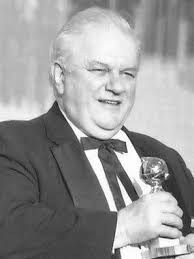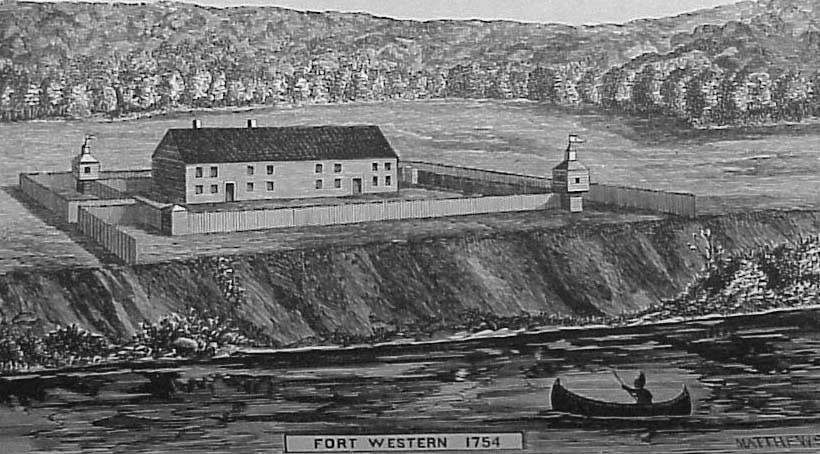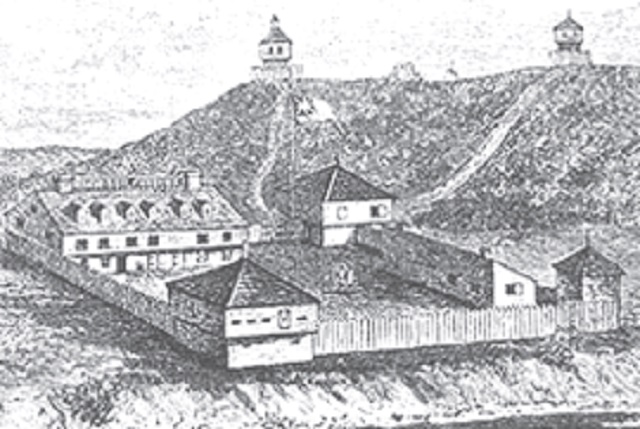Give Us Your Best Shot! for Thursday, January 6, 2022
/0 Comments/in Give Us Your Best Shot!, Photo/by Website EditorTo submit a photo for this section, please visit our contact page or email us at townline@townline.org!
FOR YOUR HEALTH: Ring In The New Year With An ‘Anti’ Resolution List
/0 Comments/in For Your Health/by Website Editor
The JRNY digital fitness platform features hundreds of workouts including strength, cardio, HIIT, yoga, stretching and Pilates. JRNY is integrated with Bowflex cardio equipment such as the Max Total 16 and features workouts perfect for use with the Bowflex SelectTech 552 and 1090 dumbbells.
(NAPSI)—As the world celebrates the new year, many will make an annual list of resolutions and goals, which often include improving overall health and fitness.
Determine What Works Best for You
NFPA urges prompt removal of Christmas trees
/0 Comments/in Central ME, Community/by Website Editor Nearly one-third (30 percent) of U.S. home fires involving Christmas trees occur in January. With this post-holiday fire hazard in mind, the National Fire Protection Association (NFPA) strongly encourages everyone to keep the festive memories and remove the hazards by disposing of Christmas trees promptly after the holiday season.
Nearly one-third (30 percent) of U.S. home fires involving Christmas trees occur in January. With this post-holiday fire hazard in mind, the National Fire Protection Association (NFPA) strongly encourages everyone to keep the festive memories and remove the hazards by disposing of Christmas trees promptly after the holiday season.
“As much as we all enjoy the look and feel of Christmas trees in our homes, they’re large combustible items that have the potential to result in serious fires,” said Lorraine Carli, NFPA’s vice president of Outreach and Advocacy. “The longer Christmas trees remain in homes, the longer they present a risk.”
Carli notes that fresh Christmas trees, which continue to dry out and become more flammable over time, are involved in a much larger share of reported Christmas tree fires than artificial trees.
According to the latest NFPA winter holiday fire data, 160 home structure fires began with Christmas trees, resulting in two civilian deaths, 12 civilian injuries, and $10 million in direct property damage, on average each year between 2015 and 2019. Overall, fires that begin with Christmas trees represent a very small but notable part of the U.S. fire problem, considering that they are generally in use for a short time each year.
To safely dispose of a Christmas tree, NFPA recommends using the local community’s recycling program, if possible; trees should not be put in the garage or left outside. NFPA also offers these tips for safely removing lighting and decorations to ensure that they remain in good condition:
Use the gripping area on the plug when unplugging electrical decorations. Never pull the cord to unplug any device from an electrical outlet, as this can harm the wire and insulation of the cord, increasing the risk for shock or electrical fire.
As you pack up light strings, inspect each line for damage, throwing out any sets that have loose connections, broken sockets or cracked or bare wires.
Wrap each set of lights and put them in individual plastic bags or wrap them around a piece of cardboard.
Store electrical decorations in a dry place away from children and pets where they will not be damaged by water or dampness.
LEGAL NOTICES for Thursday, January 6, 2022
/0 Comments/in Legal Notices/by Website EditorSTATE OF MAINE
PROBATE COURT
COURT ST.,
SKOWHEGAN, ME
SOMERSET, ss
NOTICE TO CREDITORS
18-A MRSA sec. 3-801
The following Personal Representatives have been appointed in the estates noted. The first publication date of this notice JANUARY 6, 2022 If you are a creditor of an estate listed below, you must present your claim within four months of the first publication date of this Notice to Creditors by filing a written statement of your claim on a proper form with the Register of Probate of this Court or by delivering or mailing to the Personal Representative listed below at the address published by his name, a written statement of the claim indicating the basis therefore, the name and address of the claimant and the amount claimed or in such other manner as the law may provide. See 18-C M.R.S.A. §3-80.
2021-346 – Estate of DANIEL MURPHY, late of Cambridge, Me deceased. Susan Murphy, 12 Rock Island Road, Quincy, MA 02169 appointed Personal Representative.
2021-348 – Estate of SHEILA J. MOODY, late of Madison, Me deceased. Kimberly J. Moody, 21 John Street, Madison, Me 04950 appointed Personal Representative.
2021-195 – Estate of ERIC JASON PORTER, JR., late of Hartand, Me deceased. AnnMarie Davenport, 5343 South Hill Road, Bristol, NY 14424 appointed Personal Representative.
2021 -349 – Estate of MARGARET T. BROWN, late of Madison, Me deceased. Timothy G. Brown, 1378 E Madison Road, Madison, Me 04950 appointed Personal Representative.
2021-353 – Estate of RONALD J. GILBERT, late of Canaan, Me deceased. Michelle Gilbert Robbins, 39 Conifer Lane, Skowhegan, Me 04976 appointed Personal Representative.
2021-360 – Estate of VIRGINIA M. VENEZIANO, late of Madison, Me deceased. Diane L. Godin, 855 Waterville Road, Skowhegan, Me 04976 appointed Personal Representative.
2021-361 – Estate of WILLIAM E. VAWSER, a/k/a Bill Vawser, late of Hartland, Me deceased. Benjamin J. Vawser, 99 Abbott Lane, Etna, Me 04434 appointed Personal Representative.
2021-362 – Estate of ALFRED ERVIN LOADWICK, late of Mercer, Me deceased. Doris A. Loadwick, 287 Rome Road, Mercer, Maine 04957 appointed Personal Representative.
2021-363 – Estate of ALFRED E. JACKSON, JR., late of Madison, Me deceased. Judith H. Sarapas, 11 Bonnybank Terrace, South Portland, ME 04106 appointed Personal Representative.
2021-367 – Estate of WILLIAM A. KENNEY, late of Madison, Me deceased. Michael A. Kenney, 3211 Empedrado Street, Tampa, FL 33629 appointed Personal Representative.
2021-368 – Estate of KEVIN MICHAEL DYER, late of Fairfield, Me deceased. Danielle Nicole Fleming, 34 Poulin Drive, Readfield, Me 04355 appointed Personal Representative.
2021-369 – Estate of KEITH R. MILLER, late of Solon, Me deceased. Athena S. Miller, 310 Solon Road, Brighton Plt. Me 04912 appointed Personal Representative.
2021-371 – Estate of ELAINE M. NELSON, late of Canaan, Me deceased. Randy G. Nelson, 195 Goodhue Road, Sidney, Me 04330 appointed Personal Representative.
2021-359 – Estate of ROBERT S. HARRIS, late of Mercer, Me deceased. Victoria D. Hadley, 17 Kennebec Street, Waterville, Me 04901 appointed Personal Representative.
2021-372 – Estate of BRETTA H. HAMILTON, late of Saint Albans, Me deceased. Davin Grant-Pollo, 507 Stage Road, Etna, Me 04434 appointed Personal Representative.
2021-0139-3 – Estate of LINDA WHITMORE-SMITHERS, late of Starks, Me deceased. Brad Czarnecki, 1734 Massachusetts Avenue SE, St. Petersburgh, FL 33703, and Frank Czar, 10 Sanborn Terrace, Amesbury, MA 01913 appointed Co-Personal Representatives. NOTICE: Any claims against this estate should be sent to Franklin Probate Court, 140 Main Street, Suite 6, Farmington, ME 04938.
To be published on Jan 6, & Jan 13, 2022
Dated January 3, 2022
/s/ Victoria Hatch,
Register of Probate
(1/13)
STATE OF MAINE
PROBATE COURT
41 COURT ST.
SOMERSET, ss
SKOWHEGAN, ME
PROBATE NOTICES
TO ALL PERSONS INTERESTED IN ANY OF THE ESTATES LISTED BELOW
Notice is hereby given by the respective petitioners that they have filed petitions for appointment of personal representatives in the following estates or change of name. These matters will be heard at 1 p.m. or as soon thereafter as they may be on JANUARY 12, 2022. The requested appointments or name changes may be made on or after the hearing date if no sufficient objection be heard. This notice complies with the requirements of 18-C MRSA §3-403 and Probate Rule 4.
2021-323 – Estate of NEVEAH LEIGH PUSHARD. Petition for Change of Name (Minor) filed by Elaine Ellis, 14 Dore Street, Skowhegan, Me 04976 requesting minor’s name be changed to NEVEAH LEIGH BUBIER for reasons set forth therein.
2021-324 – Estate of ADAM KENNETH PARENT. Petition for Change of Name (Adult) filed by Adam Kenneth Parent, 130 North Road, Detroit, Me 04929 requesting his name be changed to Briar Rose for reasons set forth therein.
2021-325 – Estate of ISABELLA RENEE BARKAC. Petition for Change of Name (Minor) filed by Kammerone Girroir, 612 Warren Hill Road, Palmyra, Me 04965 requesting minor’s name be changed to Isabella Renee Barkac-Girroir for reasons set forth therein.
2021-351 – Estate of WYATT KENNETH EDWARD SALISBURY, Petition for Change of Name (Minor) filed by Megan Ellis, 119 Main Street, Skowhegan, Me 04976 requesting minor’s name be changed to Wyatt Edward Ellis for reasons set forth therein. SPECIAL NOTICE: this notice is especially directed to KENNETH M. SALISBURY who is of address unknown.
Dated: December 20, 2021
/s/ Victoria Hatch,
Register of Probate
(1/6)
Vassalboro food pantry to receive matching grant
/0 Comments/in Community, Vassalboro/by Website Editor
Photo source: Vassalboro Food Station Pantry
Submitted by Don Breton
We are fortunate to have a group of volunteers that run and manage the Vassalboro Food Station Pantry. They have been recognized and selected to receive up to $1,000 from American Precision, Inc., a machine shop business from Indiana, with whom I am associated. They have challenged the residents of Vassalboro and friends of the pantry to make monetary donations between December 23, 2021 and February 1, 2022, to the pantry. They will match whatever is donated up to $1,000. You can send your donation(s) to Cindy Ferland, 26 Ferland Lane, Vassalboro, ME 04989, or you can also send a donation via Paypal to dlbreton@roadrunner.com. If you mail a check, please put “American Precision Donation Match” on the memo line.
Let’s all help the food pantry achieve this goal, please donate.
MAINE MEMORIES: Cock-a-Doodle-Do!
/0 Comments/in Maine Memories/by Evangeline T by Evangeline T.
by Evangeline T.
Hello and welcome to Maine Memories, little snippets of life from our home state.
For this installment, I’m remembering when I raised chickens.
At about age 12, each girl in a club I belonged to had to do a summer project.
Being raised on a farm, I opted to raise bantam chickens. Bantams aren’t as big as regular chickens and are sometimes referred to as miniatures. I had two females and one rooster.
Now Bantams, at least mine, could fly, not too far, 200 feet or so and not high up in the air, maybe 20 feet. My point is, a fenced in yard wasn’t much help, as each day they flew over the fence and out.
Dad fixed that problem. He trimmed some feathers on one wing of each bird. Trimming didn’t hurt them in any way, but they’d become off-balanced when flying. It worked on the females, but let me tell you, that frisky little rooster continued with his messy daily flights, off balance or not!
Our driveway was a circle, which had a section of lawn and a pine tree in it. That rooster loved to fly and perch himself in the pine tree every morning. If you have ever visited or lived on a farm that had a rooster, you’ve probably heard an early morning sunrise “cock-a-doodle do”! My bantam rooster had a problem; his voice wouldn’t produce a nice morning “cock a doodle do”. It came out sounding more like rough-a-rough, ending sharply. Each morning at sun rise, he’d sit in that pine and try again and again, but the sound was always the same.
You have to give him credit, though. He never gave up, and his rough-a-rough lives on in my memory.
There’s a lesson here we can all take to heart: keep on trying. You just might get it right! Cock-a-doodle-do!
REVIEW POTPOURRI – Actor: Charles Durning
/0 Comments/in Review Potpourri/by Peter Cates by Peter Cates
by Peter Cates
Charles Durning
A select number of actors and actresses could enhance mediocre films and television shows with their contributions; in vehicles worthy of their talents, the nominations for Oscars and Emmys came pouring in.
Those no longer living (excluding the obvious superstars) would include Max von Sydow, George Sanders, Robert Ryan, Jo Van Fleet, Susan Hayward, Lee J. Cobb, Ray Collins, Agnes Moorehead, Judith Anderson, Everett Sloane, Martin Balsam, Alastair Sims, Jeannette Nolan, etc. (Those still living will be saved for another day.).
I add Charles Durning (1923-2012) and give a brief summary of his background.
When he served during World War II, his unit was part of the D-Day invasion, at Omaha Beach, and all of its members were killed except for Durning, who was severely wounded. A few months later, he recovered and fought in the Battle of the Bulge. He was awarded several medals for bravery under fire and would be a popular speaker at Memorial Day and 4th of July commemorations.
While working as an usher in 1951 at a Boston burlesque theater, he was asked to replace a drunken actor on stage, thus beginning a part time career in mostly minor roles in such plays, until the famed Shakespeare-in-the-Park producer Joe Papp saw him and liked what he saw.
Work on stage and in films and television began pouring in more often.
I jump ahead to my first experience of Durning in the mid-’70s Burt Reynolds film Starting Over, as the brother-in-law of Burt’s character. Durning brought an understated reserve in his performance that drew attention away from Reynolds and his leading lady Jill Clayburgh.
Next would be Durning’s appearance in the early ‘80s TV film Night of the Scarecrow as the leader in the lynching of an innocent, educationally-challenged man under wrongful suspicion in a rape case and dressing his corpse up as a scarecrow.
The scarecrow becomes a night of the living dead creature and members of Durning’s lynch mob start mysteriously turning up dead. He worries, but not enough, and is home by himself after dark watching television in his recliner when he starts hearing shuffling noises in the dining room.
The choreography of his leaping out of the recliner and skating all over the floor before he’s executed by the scarecrow was absolutely hilarious.
Other notable roles:
Durning’s one man show on a Boston University stage as baseball legend Casey Stengel, which was hosted by the legendary actor George C. Scott in the audience and televised live on National Public Television.
His role as the sadistic warden in 1987’s HBO miniseries The Man Who Broke 1000 Chains.
His appearance as a governor of Mississippi in the Coen brothers O Brother Where Art Thou; the manner in which Durning stared at stupid sycophantic underlings is worth the viewing.
A guest appearance on a 2004 NCIS episode as a shell-shocked World War II veteran undergoing flashbacks.
In a Parade magazine interview, Durning stated the following about acting:
“There are many secrets in us, in the depths of our souls, that we don’t want anyone to know about. There’s terror and repulsion in us, the terrible spot that we don’t talk about. The place that no one knows about – horrifying things we keep secret. A lot of that is released through acting.”
Charles Durning died from natural causes in 2012 at the age of 89. The New York Times paid tribute to him and Jack Klugman as “extraordinary actors ennobling the ordinary.”
SOLON & BEYOND: Remembering Percy and his words of wisdom
/0 Comments/in Solon & Beyond/by Marilyn Rogers-Bull by Marilyn Rogers-Bull & Percy
by Marilyn Rogers-Bull & Percy
grams29@tds.net
Solon, Maine 04979
This week I’m going to print an old article from The Town Line dated April 1, 2021: It was called, The time I let Percy write the column in my absence. Now I would like to thank Roland from the bottom of my heart, for leaving Percy’s picture beside mine on our column, for all these years. For those of you who don’t know, Percy died quite a few years ago, and I still miss him every day. He was a very remarkable animal!
I came across a small clipping that I found recently dated The Town Line – January 3, 2008, with only Percy’s picture (Percy was alive and well at that time, and I had let him write our column that week because I was down in sunny Florida!).
Good morning dear friends. Don’t worry be happy! This is Percy wishing you the happiest of New Years! I am missing my human. She has been down in sunny Florida since before Christmas I am thrilled beyond belief that she is letting me write this column, again, since so many of you have told her that you prefer my writing instead of hers.
Since I don’t have any real news to share, I have been reflecting what subject to write about, think perhaps to delve into. Our byline each week being, “Don’t Worry be Happy, and she’s been using it for years, before I started helping her. Does that make you think just how happy you really are?
Some quotes I can think of are “Cheerfulness greases the axles of the world.”
“Happiness is a perfume you cannot pour on others without getting a few drops on yourself.”
“True happiness consists in making others happy.”
But the one I like the best is unconditional love is the greatest! Are you gaining insight about finding happiness from my words? I do hope so…….but to continue, with more wise words. When you do the things you do with love you give life a gleam that most people only carry a glimpse of. Your attitude affects the outcome of so many things. Smiles inspire smiles. Reaching out brings people in. Looking on the bright side doesn’t entail being naïve and donning rose colored glasses. It simply means leaving the cynicism and complaining to someone else, someone who will spend there whole life wondering why good things don’t come their way.
Being a positive person, someone who looks forward to so much, is not only rewarding, it’s refreshing. The wisest people on earth are those who have a hard time recalling their worries….and an easy time remembering their blessings. Now my human has edited what I have written to share with you, but, will it get by the real editor ?
I have been told that she asked him once how much mushy stuff he would let her get away with. I’m pretty sure he likes me best and hopefully some of you have told him that you like my writing better than hers.
Anyway, my human and I would like to wish you the Happiest.
Up and down the Kennebec Valley: Wars – Part I
/0 Comments/in Augusta, Central ME, Hallowell, Local History, Maine History, Palermo/by Mary Growby Mary Grow
For the next however many weeks, this series will discuss 19th-century wars that affected central Kennebec Valley residents. After the British gained legal control of the region by the 1763 Treat of Paris, the valley was mostly peaceful, but military actions elsewhere had local effects.
Your writer will start with the American Revolution (1775-1783), and go on to summarize some of the local connections with two more wars that finally ended quarrels over Britain’s interest in this side of the American continent, the War of 1812 (1812-1815) and the Aroostook War (1838-1839).
Next will come a very incomplete story of the all-encompassing Civil War (1861-1865). Many men and some women from the central Kennebec Valley were actively involved.
This part of the series will conclude with the Mexican War (1846-1848) and the Spanish-American War (1898). Though Kennebec Valley residents were aware of these geographically distant events, local effects were limited, with the important exception of families whose menfolk fought, and sometimes died, on the fields or seas of battle.
* * * * * *
The United States in the 19th century had two forms of military organization, the national army and the local militia units.
The U. S. Army, the oldest branch of the national military service, is a direct successor of the Continental Army, organized June 14, 1775. After the Revolution, mistrust of a “standing army” in the newly independent country led to temporary abandonment of a national force.
Soon, however, frontier wars made an organized armed force necessary. Wikipedia says Congress created the Legion of the United States in 1791 and in 1796 renamed it the United States Army. The United States has had a national military ever since, though a small one until the 20th century.
Wikipedia says local militias date from Sept. 16, 1565, when Spanish Admiral Pedro Menendez de Aviles organized the first unit in St. Augustine, Florida, leaving the men to guard supplies while he led his army to attack a French fort.
When English settlers arrived four decades later, they brought with them a tradition of organized militia units. Wikipedia says the Jamestown and Plymouth colonies (established in 1607 and 1620, respectively) started by enrolling every able-bodied man as a militia member.
“By the mid-1600s every town had at least one militia company (usually commanded by an officer with the rank of captain) and the militia companies of a county formed a regiment (usually commanded by an officer with the rank of major in the 1600s or a colonel in the 1700s),” Wikipedia summarizes.
After independence, colonies’ militia units became state militia units. Wikipedia says the federal government first began regulating them in 1792, and until the early 20th century relied on them “to supply the majority of its troops.” The militia became the National Guard in 1903.
Augusta historian Charles Nash included a chapter on the militia in his 1904 history. He described a typical local unit as enrolling able-bodied “citizens” (this writer is quite sure he meant male citizens) between 18 and 40 years old each spring.
“The organization of the militia consisted of companies of infantry in citizen’s dress (better known as ‘string-beaners’), light infantry in uniform, cavalry, artillery, and riflemen; these were organized into regiments, brigades, and divisions,” Nash wrote. Each infantry regiment normally had a company of cavalry and another of riflemen with it.
Uniformed infantry wore blue coats, artillery men “the revolutionary color [dark blue, according to Wikipedia] faced with red” and riflemen green, the better to hide in ambush in the woods. Infantry and rifle companies included fifers and drummers; the cavalry and artillery units had buglers.
Officers, Nash wrote, rode horseback. They wore the “wind-cutting” three-pointed, round-crowned black hat associated with Napoleon Bonaparte, “surmounted by lofty plumes,” and on their shoulders “glittering epaulettes.”
After organizing in May, militias drilled during the summer and in the fall held local musters that were the year’s main attraction for people of all classes, Nash said. Augusta’s muster ground for many years, well into the 1800s, was an area between Augusta and Hallowell named Hinkley’s Plains, after an early settler.
Nash described a typical muster, with demonstrations of military maneuvers, music and a final review before the mounted commander. Outside the muster area “tradesmen and peddlers and hucksters” assembled as for a fair; a great deal of liquor was consumed, inside and outside. In a footnote, Nash wrote that in 1844 the Maine Legislature banned musters because of the “gross intemperance practices.”
The 1817 muster at Hinkley’s Plains was special, Nash wrote, because Massachusetts Governor John Brooks came north to review the troops, only the second time a Massachusetts governor had visited the Kennebec Valley.
Governor Brooks had been a lieutenant colonel in the Revolutionary army and afterwards a major-general in the militia, and was known for his military appearance and skilled, graceful horsemanship. Local soldiers were eager to make their appearance before him, and, Nash wrote, people from 50 miles around made plans to attend.
Alas, early morning clouds and fog turned into a “cold and pitiless northeast rain storm.” The audience stayed home. The troops mustered anyway, with “drooping plumes, soiled uniforms and muddy boots and ruined gaiters.”
Brooks reviewed them from the back of “a fine dapple-gray clad in rich equestrian trappings.” The governor wore “a revolutionary three-cornered hat, with a large cockade on its left point, and a short black plume on its crown;…a blue military cloak, the cape of which was deeply bordered with red silk velvet, and its front and sides trimmed with gold lace; his breeches were buff and his high swarrow boots of shiny black polish, displayed silken tassels below the knees; a gold-hilted sword and gilded scabbard hung by his side.”
[“Swarrow,” or Suwarrow or Suarrow, boots are mentioned in the Askin Papers, documents relating to John Askin’s life in the northwestern United States, written between 1747 and 1820. Howard Franklin Shout, who wrote a thesis translating the papers into modern English for his Michigan State College Master of Arts degree in the 1920s, confessed that he was “not able to identify” the word.]As Brooks and his staff began the review, Nash wrote, the governor took off his hat, “and while the merciless rain poured upon his whitened locks which fell upon his shoulders, he rode slowly before the line looking upon every soldier in it.”
Smaller towns, too, had their local militias. Ruby Crosby Wiggin, in her history of Albion, mentioned an 1808 town meeting vote to buy 32 pounds of powder. Other area towns had organized militia units and were stocking up on powder around that time, she wrote, adding, “Troops practiced on the town commons and were quite well organized when the War of 1812 called them to active duty.”
Her research in town records found local expenditures for the town militia, and supplementary payments from the State of Maine, part of the time (depending on successive town treasurers’ degree of detail) from 1839 until the Civil War.
Palermo had two muster fields, Milton Dowe wrote in his 1954 history. One was at Longfellow Corner, “where the Second Baptist Church was built in 1827”; the other was on Marden Hill.
* * * * * *
Six of the 12 central Kennebec Valley towns covered in these articles had legal European settlers by the spring of 1775 (Vassalboro, including Sidney, and Winslow, including Waterville, were incorporated on April 26, 1771), and four more by the time the Revolution ended in 1783. The exceptions were the off-the-river towns of Albion and Windsor, where the first settlements date from the 1880s. Your writer thinks it highly probable, however, that trappers, hunters, fugitives, hermits and other solitary types had homes in the region before record-keeping started.
According to local histories, Augusta and Winslow were occupied first. Augusta was the site of the Cushnoc trading post, which dated from the 1620s, and then of Fort Western, built in 1758. Fort Halifax, in Winslow, was built in 1754-55.
Europeans mostly moved from the coast up the Kennebec, settling the east shore at Vassalboro around 1760 and around 1763 the west shore that later separated from Vassalboro as Sidney. Winslow settlers had spilled across the river into what became Waterville before Fairfield was settled in 1771.
By April 1775 Fairfield had nine families, according to the writers of the bicentennial history. The writers surmised that it took months for news of Lexington and Concord to reach them, and that between their immediate needs and the protection of nearby Fort Halifax, they felt little personal concern.
Clinton’s and Benton’s early arrivals date from around 1775. By then people were moving inland; China’s first family arrived in 1773, Palermo’s around 1776 or 1777.
Kingsbury, considering the whole of Kennebec County, did not share the later Fairfield historians’ opinion about the lack of local reaction. He wrote that news of the fighting at Lexington and Concord led to “bands of scantly equipped men and boys…pushing their way through the forests” to the nearest place where they could enlist.
“Many farms were abandoned or left to the care of women and minors,” Kingsbury continued, and not all the minors were content to remain behind (as examples in a following article will show).
In Augusta (then Hallowell), he said, a group of patriots organized themselves in January 1775 (before Lexington and Concord). In following months they formed a pro-Revolutionary military company and a public safety committee whose responsibilities included corresponding with Revolutionary leaders around Boston.
Winslow, similarly, had a three-man committee of correspondence, created in 1776 to keep town officials in touch with other pro-independence groups, Kingsbury wrote.
The specific event during the Revolutionary War that directly involved the Kennebec Valley was the expeditionary force sent in September 1775 to capture Québec from the British. Led by Colonel Benedict Arnold, about 1,100 men left Newburyport, Massachusetts, by ship on Sept. 17, or Sept. 19 (or thereabouts; exact dates differ from one to another of the many accounts of the expedition). They began landing at Major Reuben Colburn’s shipyard in Gardinerston (now Pittston) a few days later.
Colburn, a supporter of the Revolution, had collected information and built bateaux, flat-bottomed boats the army needed to navigate the river. The boats were built of green wood and therefore heavy and leaky; food, gunpowder and soldiers’ feet were wet most of the time.
After several days of transferring supplies to the bateaux, the expedition moved upriver. Stops along the Arnold Trail to Québec, as it is named on the National Register of Historic Places, included Fort Western, in Augusta; Fort Halifax, in Winslow; and Fairfield, where the 1988 bicentennial history says an early settler named Jonathan Emery repaired some of the bateaux, and a memorial stone marks the route.
By 1775 Fort Halifax had been out of service since the peace of 1763. Much of it had been torn down, and the central building had become a tavern, according to the centennial history of Waterville. Two area residents had explored up the river to provide advance information; another went with the expedition as a guide.
Disease and accidents, and in at least one case deliberate murder, claimed soldiers’ lives as the expedition moved on. Ernest Marriner wrote that Dr. John McKechnie (1732-1782), who had surveyed Waterville in 1762 and moved there in 1771, treated sick and injured men. Others are said to have been buried in the Emery Hill Cemetery, in Fairfield.
The murder, Kingsbury wrote, occurred as a result of a quarrel between two soldiers during several days the army spent at Fort Western. The shooter was court-martialed and sentenced to hang, but Arnold stayed the execution and forwarded the case to General Washington. The victim was buried “near the Fort burying ground”; later, Kingsbury wrote, Willow Street covered his “unheeded grave.”
Main sources
Dowe, Milton E., History Town of Palermo Incorporated 1884 (1954).
Kingsbury, Henry D., ed. Illustrated History of Kennebec County Maine 1625-1892 (1892).
Marriner, Ernest Kennebec Yesterdays (1954).
Nash, Charles Elventon, The History of Augusta (1904).
Whittemore, Rev. Edwin Carey, Centennial History of Waterville 1802-1902 (1902).
Wiggin, Ruby Crosby, Albion on the Narrow Gauge (1964).
Websites, miscellaneous.
Interesting links
Here are some interesting links for you! Enjoy your stay :)Site Map
- Issue for July 10, 2025
- Issue for July 3, 2025
- Issue for June 26, 2025
- Issue for June 19, 2025
- Issue for June 12, 2025
- Issue for June 5, 2025
- Issue for May 29, 2025
- Issue for May 22, 2025
- Issue for May 15, 2025
- Issue for May 8, 2025
- Issue for May 1, 2025
- Issue for April 24, 2025
- Issue for April 17, 2025
- Issue for April 10, 2025
- Issue for April 3, 2025
- Issue for March 27, 2025
- Issue for March 20, 2025
- Issue for March 13, 2025
- Issue for March 6, 2025
- Issue for February 27, 2025
- Issue for February 20, 2025
- Issue for February 13, 2025
- Issue for February 6, 2025
- Issue for January 30, 2025
- Issue for January 23, 2025
- Issue for January 16, 2025
- Issue for January 9, 2025
- Issue for January 2, 2025
- Sections
- Our Town’s Services
- Classifieds
- About Us
- Original Columnists
- Community Commentary
- The Best View
- Eric’s Tech Talk
- The Frugal Mainer
- Garden Works
- Give Us Your Best Shot!
- Growing Your Business
- INside the OUTside
- I’m Just Curious
- Maine Memories
- Mary Grow’s community reporting
- Messing About in the Maine Woods
- The Money Minute
- Pages in Time
- Review Potpourri
- Scores & Outdoors
- Small Space Gardening
- Student Writers’ Program
- Solon & Beyond
- Tim’s Tunes
- Veterans Corner
- Donate











